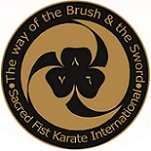|
The word "shuai," 摔, stands for "to throw onto
the ground", while "jiao" may be one of two characters: the first and older,
角, stands for "horns" and the second and recent, 跤, stands for "wrestle or
trip using the legs". In modern Chinese Shuai Jiao is always written using
the more recent characters 跤, and should be translated as "to throw onto the
ground through wrestling with legs". The use of the character 角 is due to
the fact that in the earliest form of Shuaijiao, players wore helmet with
horns and head-butting was allowed. |
 |
|
Shuai Jiao can be divided into the
following styles:
Beijing Style - This is in essence the lineage from the Manchu Buku style
that was practised by the Imperial Palace Guard, Shan Pu Ying (善扑营,
literally the Expert in Wrestling Unit). The main characteristic is the use
of the legs to kick and off-balance opponents. It is considered a gentler
style than the Tianjin Style.
Tianjin Style - This is the lineage of Ming Dynasty Shuaijiao mixed with
Manchu Buku. The main characteristic is the use of legs to kick and
off-balance. It is considered a harder and rougher style than the Beijing
Style.
Baoding Style - This is the lineage that is called Kuai Jiao (Fast
Wrestling). The main characteristic is the fast application of technique.
Another characteristic is the adaptation of Shaolin Quan from Ping Jingyi, a
famous teacher of Shuaijiao who learned Shaolin style from the Meng family
of Nanguan County even though he was a Muslim Hui.
The above three styles are sometimes called Hebei Style Shuaijiao or simply
Shuaijiao. Wrestlers wear a jacket called Dalian.
Shanxi Style - This is the lineage of Song Dynasty Shuaijiao. It is mainly
practised in the counties between the mining city of Datong in northern
Shanxi and the provinvial capital Taiyuan in central Shanxi. The main
characteristic is leg catching techniques, as traditonally wrestlers wear
only tight knee-length pants.
Mongol Style - This is the lineage from Mongol Boke.
Xinjiang Style - This is the lineage from various Turkic styles. The main
characteristic is waist techniques. |













